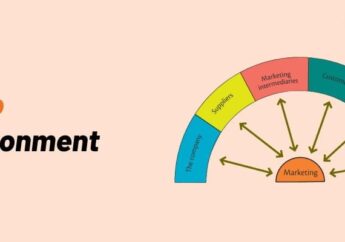Strategies To Protect Employees From Workplace Injuries
by Ankita Tripathy Management Published on: 05 April 2024 Last Updated on: 07 January 2025

Today, most workplace injuries occur due to the lack of workplace prevention measures. You need to be well aware of the scenarios that can assist you in meeting your goals with complete ease. Ensure that you follow the correct process from your end.
The more you can focus on workplace injuries, the better you can reduce the health hazard to a considerable extent. Ensure that you avoid making things too complex on your end. Figure out the best solution that can reduce workplace hazards.
Different Ways To Protect Employees From Workplace Injuries

There are several ways you can adopt to protect employees from workplace injuries. You need to be well aware of it while reaching your goals with complete ease. Ensure that you follow the correct process from your end.
1. Provide Thorough Safety Training
One of the fundamental pillars of workplace safety is comprehensive safety training. All employees, from new hires to seasoned veterans, should undergo thorough safety training programs tailored to their specific roles and responsibilities. These training sessions should cover a wide range of topics, including:
- Proper handling of equipment and machinery
- Emergency procedures and protocols
- Hazardous materials management
- Safe lifting techniques
- Fire safety and evacuation procedures
Equipping employees with the necessary knowledge and skills empower them to recognize and mitigate potential hazards effectively. Regular refresher courses and ongoing training sessions should also be conducted to reinforce safety protocols and ensure compliance.
2. Implement Proper Ergonomics
Ergonomic principles focus on designing workspaces, tools, and tasks to fit the capabilities and limitations of the human body, reducing the risk of musculoskeletal disorders and other injuries. The significance of proper ergonomic design in the workplace cannot be overstated. Poor ergonomics can lead to a myriad of musculoskeletal issues, including strains, sprains, and repetitive motion injuries. To mitigate these risks, employers should:
- Assess workstations and equipment to ensure they are ergonomically optimized.
- Provide adjustable chairs, ergonomic keyboards, and monitor stands to promote proper posture and reduce strain.
- Encourage employees to take regular breaks and engage in stretching exercises to alleviate tension and stiffness.
By ensuring that workstations are properly configured, equipment is adjusted to accommodate individual needs, and tasks are performed with good posture and technique, organizations can minimize strain and stress on employees’ bodies.
Proper ergonomics not only decreases the likelihood of workplace injuries but also enhances comfort, productivity, and job satisfaction. By prioritizing ergonomics, organizations can create a more comfortable and productive work environment while minimizing the risk of workplace injuries.
3. Ensure A Clean And Organized Workplace
A cluttered and disorganized workplace not only hampers productivity but also increases the risk of accidents and injuries. Employers should take proactive measures to maintain a clean and organized work environment by:
- Implementing regular cleaning schedules to remove debris, spills, and hazards promptly.
- Providing adequate storage solutions for equipment and materials to prevent trip hazards and falls.
- Enforcing proper waste management practices to eliminate potential fire hazards and chemical exposures.
Slip and fall injuries are one of the leading workplace injury cases handled by Pittsburgh personal injury lawyer at Dallas Hartman P.C., which is why ensuring regular cleaning and tidying efforts to help remove potential hazards is crucial. A clean and organized workplace not only enhances safety but also fosters a sense of pride and professionalism among employees.
Moreover, an organized workplace promotes efficiency and productivity by allowing employees to focus on their tasks without the distraction or risk of injury associated with a cluttered environment.
4. Provide Access To Personal Protective Equipment
Personal protective equipment (PPE) plays a vital role in saving employees from workplace hazards. Employers should identify potential risks and provide appropriate PPE to mitigate these risks effectively. Examples of commonly used PPE include:
- Safety goggles and glasses to protect against eye injuries
- Hard hats to protect against head injuries from falling objects
- Gloves to prevent cuts, burns, and chemical exposures
- Earplugs or earmuffs to reduce noise-related hearing loss
- Respirators to protect against airborne pollutants and contaminants
It is essential to ensure that employees are properly trained in the correct usage, maintenance, and storage of PPE. Regular inspections should also be conducted to identify any defects or issues with PPE, replacing them as necessary.
For healthcare professionals, such as interventional cardiologists, Leaded glasses for interventional cardiologist are a crucial part of their protective gear. These glasses provide necessary radiation protection to the eyes during procedures, ensuring the safety of medical staff while maintaining their ability to perform critical tasks effectively.
5. Conduct Regular Safety Inspections
Regular safety inspections are vital for identifying potential hazards and addressing them before they escalate into serious incidents. These inspections allow organizations to identify potential hazards, assess safety protocols, and ensure compliance with regulations.
By proactively identifying and addressing safety concerns, organizations can mitigate risks and prevent accidents before they occur. Employers should establish a systematic approach to safety inspections, which may include:
- Designating trained personnel or safety committees to conduct inspections.
- Developing checklists or protocols to guide inspection procedures.
- Documenting findings, observations, and corrective actions taken during inspections.
- Implementing a timeline for follow-up inspections and monitoring progress.
Regular inspections help workplaces stay up-to-date with evolving safety standards and best practices, ensuring that their safety protocols remain effective and relevant. Ultimately, investing time and resources in regular safety inspections demonstrates a commitment to employee well-being and helps create a safer and more productive workplace for everyone.
6. Encourage Open Communication
Open communication is essential for fostering a culture of safety within an organization. Employees should feel empowered to voice their concerns, report hazards, and provide feedback on safety protocols without fear of reprisal. Employers can promote open communication by:
- Establishing channels for employees to submit safety suggestions, concerns, and incident reports.
- Encouraging active participation in safety meetings, committees, and training sessions.
- Providing opportunities for employees to contribute to safety initiatives and improvement efforts.
- Recognizing and rewarding employees for their contributions to workplace safety.
By encouraging open communication, organizations can tap into the collective knowledge and experience of their workforce to identify and address safety issues effectively.
Common Types Of Workplace Hazards

There are some common types of workplace hazards that you should be well aware of while reaching your goals. Ensure that you follow the right process from your end. Keep the process in perfect shape to meet your goals.
1. Safety Hazards
These are some of the common types of workplace hazards that can cause injury, illness, and death. You need to be well aware of it if you want to get away from these hazards. Examples of safety hazards can be slips, trips, and falls.
Although, you must be well aware of it if you want to avoid any kind of accidents in place. Keep the knowledge of workplace injuries to save your life. Ensure that you follow the correct process from your end.
2. Biological Hazards
These are some of the microorganisms that can cause serious illness and problems for workers in the workplace. Some examples of these parasites are bacteria, viruses, fungi, and parasites. Additionally, workers in healthcare and wastewater treatment are exposed to these risks.
You should be well aware of the scenarios that can assist you in reducing the chances of injuries in the workplace. Try to keep the process in perfect order. Without knowing the facts things can become more complex for you.
3. Physical Hazards
These are, in most cases, the environmental factors that can cause problems for you in the long run. Examples of physical hazards include loud noise, extreme temperatures, radiation, vibration, and poor lighting.
You must not make your selection and choices in incorrect ends while meeting your requirements with complete ease. Ensure that you follow the correct process from your endpoints. Physical hazards in the workplace can create problems for you.
4. Ergonomic Hazards
These are some of the factors that you need to consider. Some of these types of hazards include musculoskeletal disorders, carpel tunnel syndrome, and back pain. Without knowing the facts, things can turn worse for you in the long run.
Keep the process in perfect shape while you want to get out of the problems with absolute clarity. Ensure that you are not making things too complex from your endpoints. The more alert you are in this case, the better you can reach your objectives.
5. Chemical Hazards
The most important security issue to avoid in the workplace is getting out of chemical hazards. Otherwise, things can become more complex while you easily reach your requirements. Even a smaller mistake can prove to be more dangerous for you.
So, you must stay alert about these facts. You must ensure that you should be aware of all the hazards that can bother you in the workplace. Additionally, you must keep the process in perfect shape.
Final Take Away
Protecting employees from workplace injuries requires a multifaceted approach that encompasses thorough safety training, proper ergonomics, a clean and organized workplace, access to personal protective equipment, regular safety inspections, and open communication.
By implementing these strategies, organizations can create safer work environments, reduce the risk of accidents and injuries, and promote the health and well-being of their employees. Ultimately, investing in workplace security not only protects employees but also provides overall success and sustainability of the organization.
Learn More About:



































































































